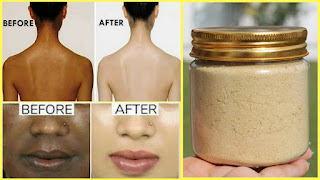Unveiling the Secrets: Ancient Japanese Rice-Based Skin Whitening Treatments
For centuries, Japanese women have prized flawless, luminous skin. Their beauty secrets, often passed down through generations, frequently feature rice â€" not just as a staple food, but as a powerful ingredient in skincare. Modern science increasingly validates the traditional wisdom, revealing the potent skin-brightening properties of rice bran and rice water. This article delves into the ancient Japanese techniques utilizing rice for achieving a radiant, even complexion, exploring both historical practices and modern interpretations.
The Power of Rice: Historical Context
Rice cultivation has been central to Japanese culture for millennia, deeply interwoven with its aesthetic ideals. Early texts and artwork depict women using rice-based preparations for their skin. This wasn’t simply a matter of convenience; rice was recognized for its ability to nourish and enhance the skin’s appearance. The meticulous cultivation techniques, emphasizing purity and quality, likely contributed to the exceptional benefits derived from the rice itself. The practice wasn't solely about whitening, but achieving a healthy, even-toned complexion, viewed as a sign of beauty and well-being. These ancient methods, refined over centuries, form the basis for many modern skincare products.
The Role of Rice Bran
Rice bran, the outer layer of the rice grain, is rich in antioxidants like oryzanol and vitamin E. These potent compounds combat free radical damage, a major contributor to premature aging and uneven skin tone. Ancient Japanese women likely utilized rice bran in various ways, potentially applying it directly to the skin as a scrub or mask. This exfoliating action removes dead skin cells, revealing brighter, smoother skin underneath. Its emollient properties also contributed to improved skin hydration and suppleness.
The Miracle of Rice Water
Rice water, the starchy water left over after rinsing rice, became a cornerstone of traditional Japanese beauty rituals. This liquid is brimming with beneficial components, including amino acids, vitamins, and minerals. Women traditionally used rice water as a toner, gently washing their faces with it to achieve a brighter complexion and reduce blemishes. The natural antioxidants in rice water combat inflammation, while its minerals nourish and revitalize the skin. Its gentle yet effective cleansing action left skin feeling soft, smooth, and noticeably brighter.
Modern Applications of Ancient Wisdom
Today, the ancient Japanese methods are experiencing a revival, with many modern skincare products incorporating rice bran and rice water. Scientists have rigorously analyzed these ingredients, confirming their potent skin-enhancing properties. This renewed interest reflects a growing preference for natural, effective skincare solutions. The incorporation of these ingredients into cleansers, toners, masks, and serums makes their benefits accessible to a wider audience.
Incorporating Rice into Your Skincare Routine
You can easily incorporate these ancient techniques into your own skincare routine. Consider these simple steps:
- Use rice water as a toner: Save the water from cooking rice and use it to cleanse and tone your skin.
- Make a rice bran scrub: Combine finely ground rice bran with a little honey or oil for a gentle exfoliating scrub.
- Look for rice-based products: Many skincare brands now offer products containing rice bran extract and rice water, providing a convenient way to harness their benefits.
By embracing these age-old Japanese methods, you can unlock the secrets to achieving a radiant, even-toned complexion, naturally.

















